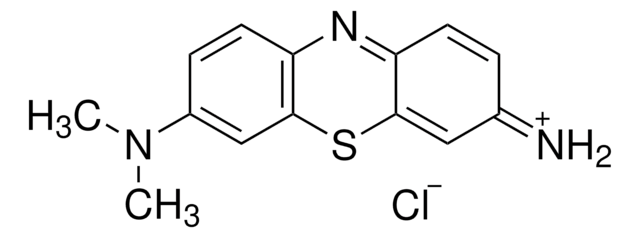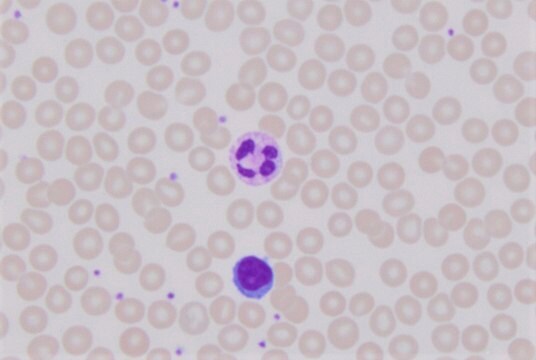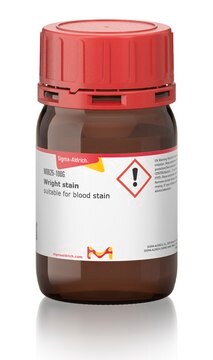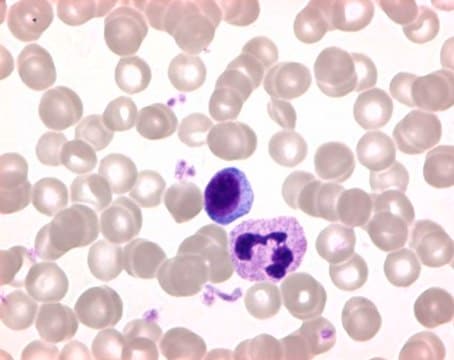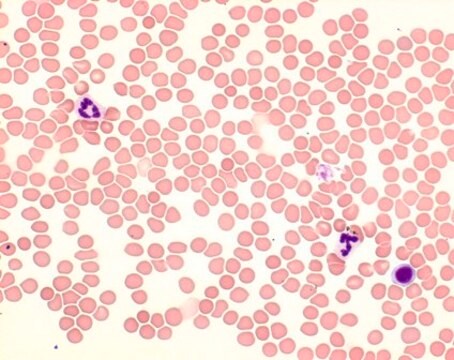Kluczowe dokumenty
G5637
Giemsa stain
certified by the Biological Stain Commission, powder or crystals
Synonim(y):
Azure mixture sicc. Giemsa stain
About This Item
Polecane produkty
Nazwa produktu
Giemsa stain, certified by the Biological Stain Commission
klasa czystości
certified by the Biological Stain Commission
Poziom jakości
Formularz
powder or crystals
metody
microbe id | staining: suitable
kolor
dark green to very dark green
mp
300 °C (lit.)
rozpuszczalność
ethanol: 1 mg/mL, blue to very deep blue
Absorpcja
≥0.6 at 647-653 nm in methanol at 0.005 g/L
Zastosowanie
diagnostic assay manufacturing
hematology
histology
temp. przechowywania
room temp
ciąg SMILES
[Cl-].CN(C)c1ccc2N=C3C=CC(=[NH2+])C=C3Sc2c1
InChI
1S/C14H13N3S.ClH/c1-17(2)10-4-6-12-14(8-10)18-13-7-9(15)3-5-11(13)16-12;/h3-8,15H,1-2H3;1H
Klucz InChI
NALREUIWICQLPS-UHFFFAOYSA-N
Szukasz podobnych produktów? Odwiedź Przewodnik dotyczący porównywania produktów
Opis ogólny
Zastosowanie
Przydatność
Inne uwagi
Kod klasy składowania
11 - Combustible Solids
Klasa zagrożenia wodnego (WGK)
WGK 3
Temperatura zapłonu (°F)
Not applicable
Temperatura zapłonu (°C)
Not applicable
Środki ochrony indywidualnej
dust mask type N95 (US), Eyeshields, Gloves
Wybierz jedną z najnowszych wersji:
Masz już ten produkt?
Dokumenty związane z niedawno zakupionymi produktami zostały zamieszczone w Bibliotece dokumentów.
Klienci oglądali również te produkty
Nasz zespół naukowców ma doświadczenie we wszystkich obszarach badań, w tym w naukach przyrodniczych, materiałoznawstwie, syntezie chemicznej, chromatografii, analityce i wielu innych dziedzinach.
Skontaktuj się z zespołem ds. pomocy technicznej